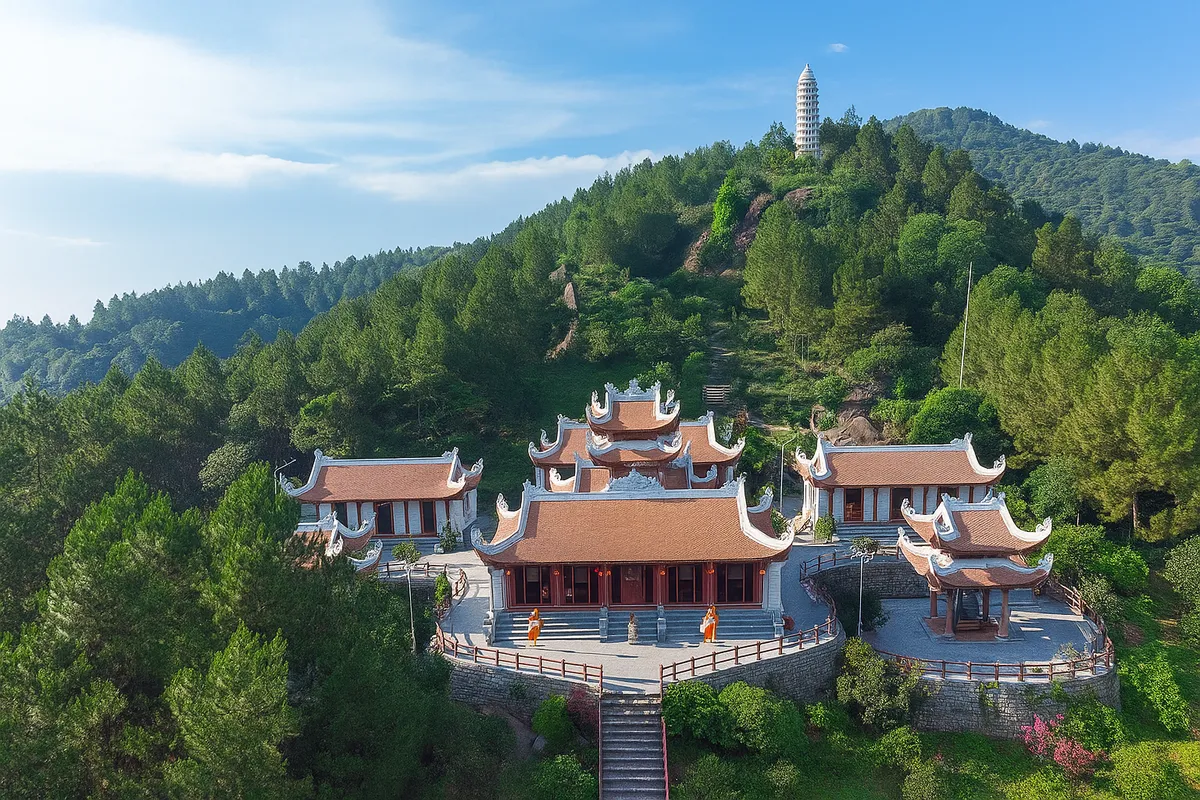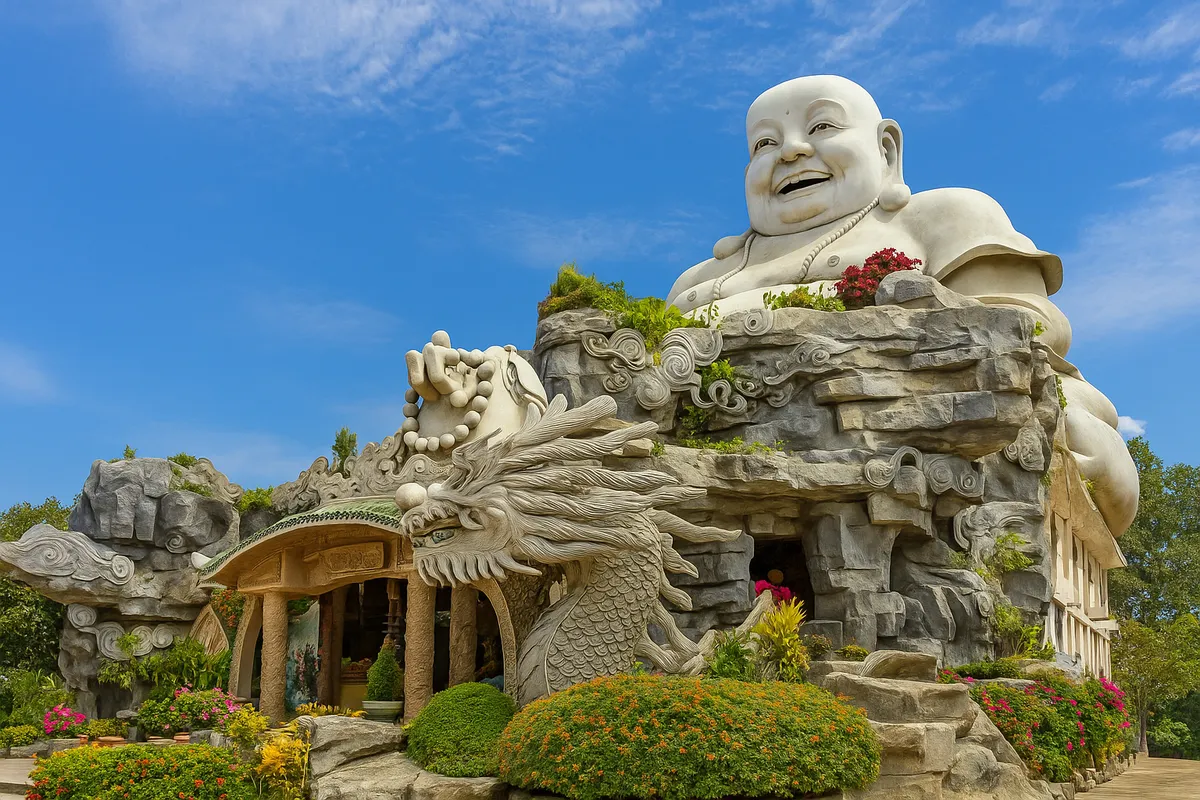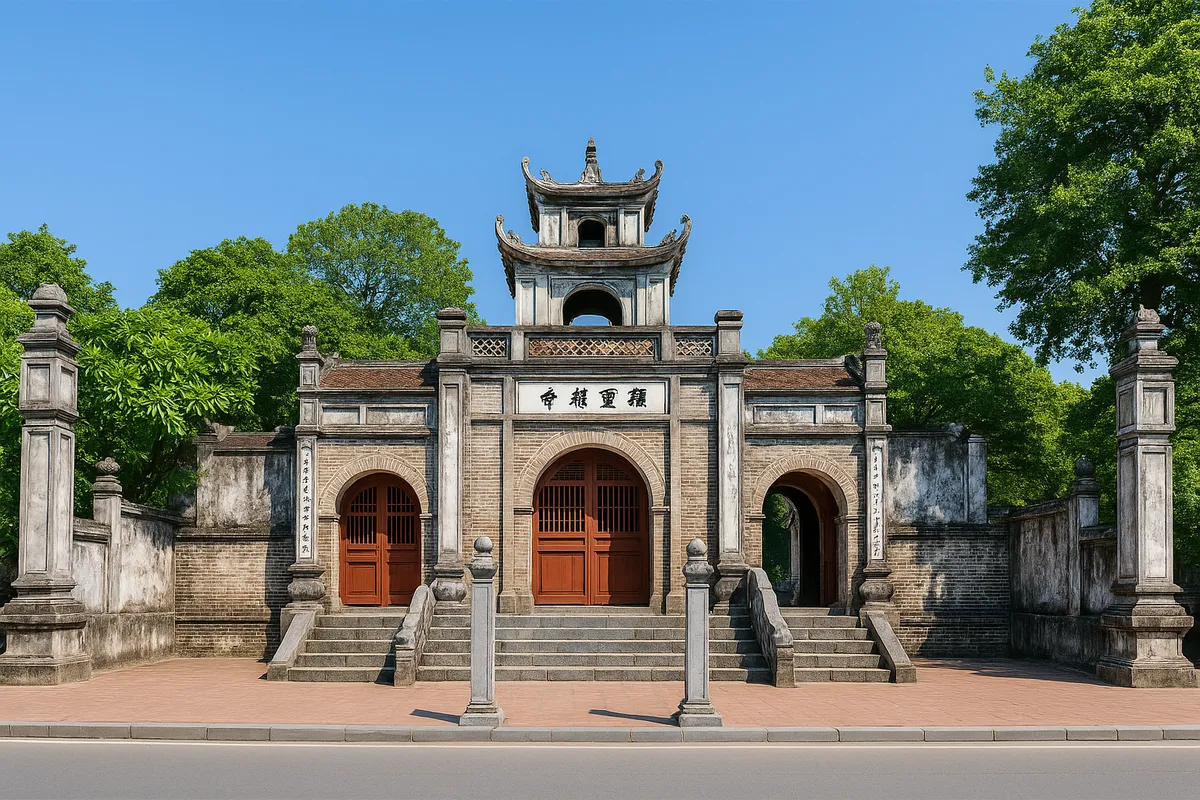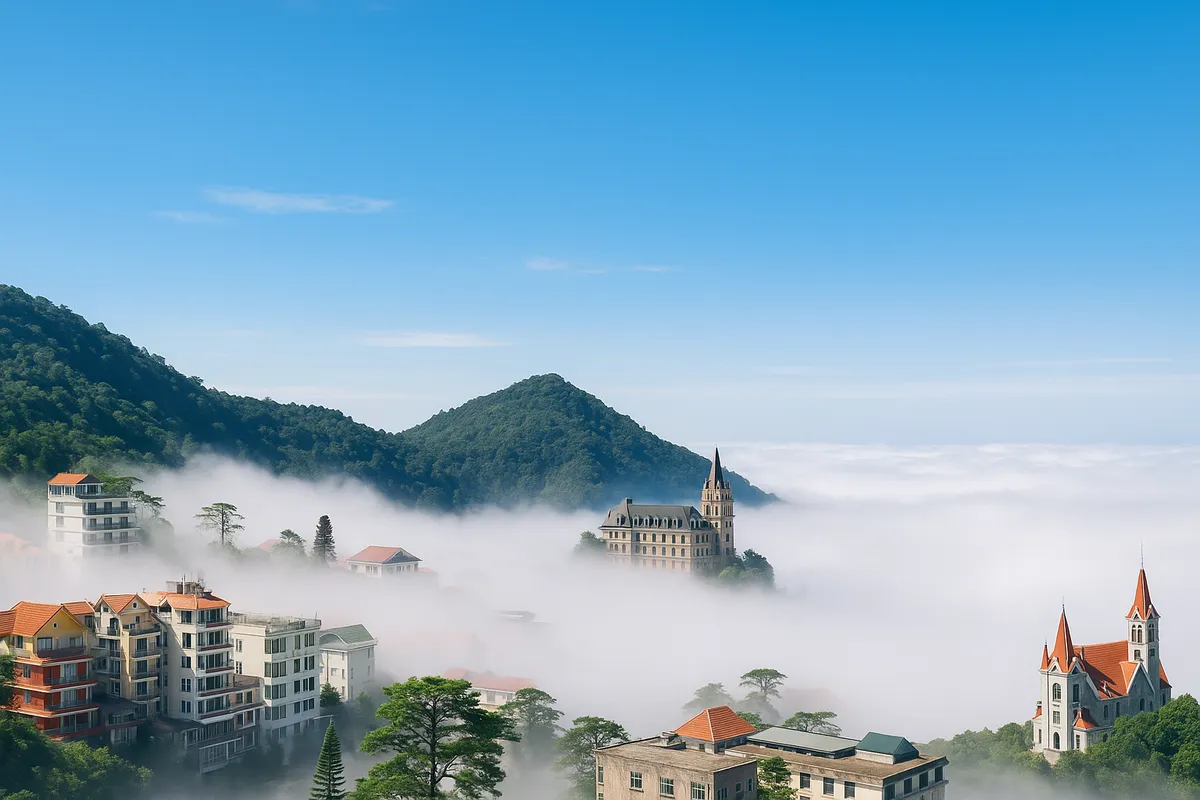Huong Tich Pagoda and things that surprise you
- Saturday, Jun 21, 2025, 15:14 (GMT+7)
Huong Tich Pagoda and things that surprise you
Huong Tich Pagoda in Ha Tinh is one of the most culturally and historically significant religious sites in Central Vietnam, yet it remains unfamiliar to many young travelers. Hidden deep within the Hong Linh Mountain range, a land long considered sacred in Vietnamese folklore, the pagoda is more than just a spiritual sanctuary. It preserves a vast and layered heritage of architecture, legends, ancient rituals, and rare natural phenomena that hold strong appeal for those seeking meaningful and insightful travel experiences.
What makes this destination unique is that it is not a single structure but an extensive complex of historical sites scattered across the mountains and forests. In addition to the famous Huong Tich Cave with its stone inscription “Nam Thien De Nhat Dong,” meaning “the most beautiful cave under heaven,” commissioned by Lord Trinh Sam in the eighteenth century, the site also includes Thuong Dien, Thien Vuong Shrine, Holy Mother’s Hermitage, Fairy Maiden Cave, Bat Canh Hermitage, Trang Vuong Platform, Fairy Bath Spring, Devil’s Crying Ravine, and several smaller temples. Each location carries its own story and significance, forming a spiritual and cultural map intertwined with natural grandeur.
The journey to the main cave involves climbing over a hundred ancient stone steps that wind along the mountain slope and pass through dense foliage. The higher one climbs, the cooler and quieter the air becomes. The path is lined with mossy rocks and age-old trees, untouched by artificial noise. All that remains is the sound of rustling leaves, distant bird calls, and the gentle trickle of mountain streams. It is not merely a physical journey, but a sensory one that gradually draws travelers into a different rhythm of life.
Huong Tich Cave is the focal point of the complex. The entrance resembles a dragon’s mouth, with four large characters engraved above the archway still clearly visible today. Inside, the cave opens into a chamber adorned with diverse stalactites shaped like lotus buds, sacred animals, and natural sculptures with names like golden tree, silver tree, mother and child, breast-shaped stone, and elephant head. Some formations slowly release drops of pure water that fall into rock basins below. Locals believe catching a drop in your palm brings good fortune or love. Regardless of belief, standing quietly in the cave and witnessing that slow, steady drop of water is a moment that leaves a deep impression.
Inside the cave stands a stone statue of Avalokitesvara, also known as the Goddess of Mercy. According to legend, it depicts Princess Dieu Thien from the ancient State of Chu, who renounced royal life to become a nun. A white tiger is said to have guided her to this cave, where she meditated and eventually attained enlightenment. The statue, though modest in size, is carved with delicate precision. Its gaze appears to look directly into the hearts of visitors. Many have come to sit quietly in front of the statue, without praying or speaking, simply to feel the presence of serenity.
Not far from the cave lies Holy Mother’s Hermitage, a small and secluded space tucked deep within the forest. Most visitors only find it with the help of a guide. Believed to be the original retreat of Princess Dieu Thien, the hermitage is modest and slightly sunken below ground level. Light is scarce, sound is muted, and the overall atmosphere is meditative. Despite its humble appearance, the hermitage leaves a lasting impression on those who visit, offering a unique kind of stillness that is hard to find elsewhere.
Another mysterious site within the complex is the Trang Vuong Platform. Located roughly one hundred meters from the main cave, this large stone foundation spans over three thousand square meters and consists of three tiers of meticulously arranged slabs. Though historical records are limited, some researchers suggest this platform may have been used for royal rituals during the Tran dynasty. Its structure is too precise to be a natural formation and its hidden location within the forest raises many questions about its origins and purpose.
In addition to architectural elements, Huong Tich Pagoda holds several rare historical artifacts. One of the most notable is the Anh Dinh, a bronze tripod ordered by Emperor Bao Dai and placed here in the 1930s. It is one of the very few imperial tripods found outside the Hue Citadel. The main shrine also houses 54 wooden statues of Buddha, each intricately carved and remarkably well-preserved. These works not only hold artistic value but also reflect the spiritual continuity of the region through the centuries.
Another compelling site is the Devil’s Crying Ravine, a natural rock cleft known for producing eerie sounds resembling human weeping. While local folklore attributes the phenomenon to wandering souls, scientists have explained it as the result of airflow and acoustics in a confined, moist space. Regardless of the explanation, standing within the ravine and hearing the wind echo through stone still sends chills down the spine. It is a rare and striking natural occurrence.
Just a short distance away is the Fairy Bath Spring, a small basin of clear blue water nestled between rocks. The water remains cold and transparent year-round, even in the peak of summer. Locals believe bathing or washing one's face here has a purifying effect, helping to calm the spirit and refresh the body. Visitors often recall a sense of renewal after contact with the spring, not due to any miracle, but because of the unspoiled beauty and quiet of the place.
One of the broader cultural features of Huong Tich is its connection to the Hong Linh Mountain range, which includes 99 distinct peaks. According to ancient legend, 100 phoenixes once flew to the region, with 99 landing on the peaks while one ascended further to the heavens. This story lives on through place names, trail markers, and symbolic carvings found throughout the site. Walking these paths is not just a hike but a symbolic act of retracing cultural and spiritual roots.
Huong Tich Pagoda is not suited for quick visits or large crowds. It is a destination that requires time, patience, and willingness to slow down. Its value does not lie in bright colors or polished facilities but in the quiet power of authenticity. A moss-covered step, a drop of cave water, an ancient statue’s gaze – these small elements combine to create an experience that stays with visitors long after they leave.
In a time when many tourist sites are becoming increasingly commercialized, Huong Tich remains largely untouched. This preservation of its natural and cultural authenticity is precisely what makes it valuable. For those who have visited, the site is not just a memory but a meaningful chapter in their personal journey toward inner reflection.
If you are someone who appreciates heritage, calm, and depth, Huong Tich is a place worth visiting at least once. You do not have to believe in ancient legends or supernatural tales. All you need to do is step into this space and let it speak for itself. There are places in the world where, if you do not go now, you may regret it later. Huong Tich is one of them. It does not demand your admiration – it earns it with silence, with time, and with truth.

 CHECKIN.VN
CHECKIN.VN








Share on